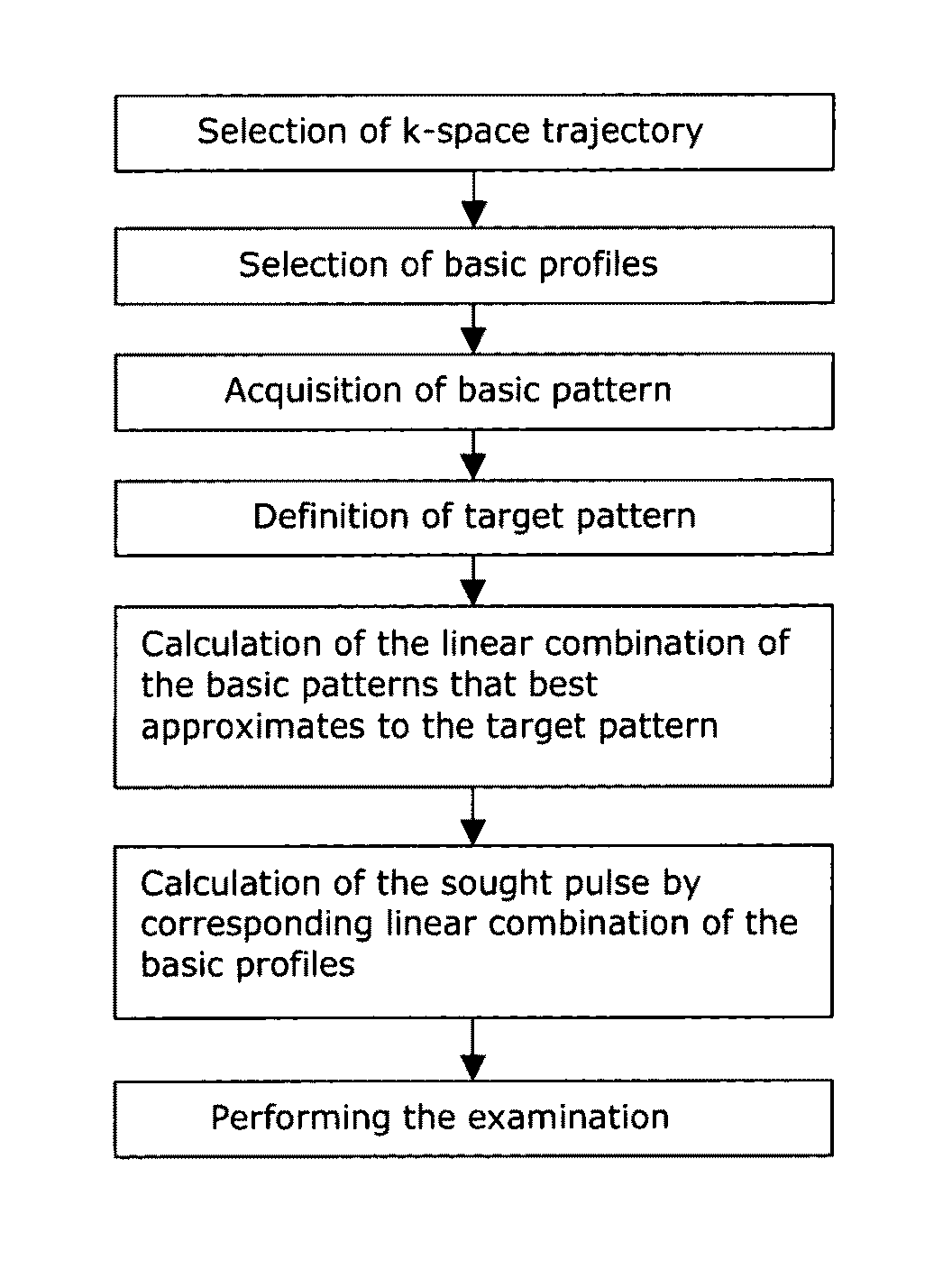Method for obtaining amplitude and phase profiles of RF pulses for spatially selective excitation
a technology of applied in the field of obtaining amplitude and phase profiles of rf pulses for spatially selective excitation, to achieve the effects of improving excitation accuracy, reducing the length of excitation pulses, and widening the use rang
- Summary
- Abstract
- Description
- Claims
- Application Information
AI Technical Summary
Benefits of technology
Problems solved by technology
Method used
Image
Examples
Embodiment Construction
[0041]FIG. 1 shows a schematic view of an MR measurement system that is suitable for performing the inventive method. The system contains a main magnet M, with which the essentially homogeneous and static basic magnetic field is produced in an examination volume V. Three sets of gradient coils GX, GY, and GZ surround this examination volume V and are put into the bore of the main magnet M to superpose additional magnetic fields with constant gradients of controllable duration and strength on the basic field. Gradient amplifiers AX, AY, and AZ are switched by the sequence control unit SEQ to produce gradient pulses at the right instant. The gradient coils GX, GY, GZ are supplied with electrical power to produce the essentially linear gradient fields.
[0042]Within the gradient field system, there are multiple RF transmission antennas TA1 to TAn that are collectively termed a transmission array comprising n elements. They surround an object under examination O and are powered from multi...
PUM
 Login to View More
Login to View More Abstract
Description
Claims
Application Information
 Login to View More
Login to View More - R&D
- Intellectual Property
- Life Sciences
- Materials
- Tech Scout
- Unparalleled Data Quality
- Higher Quality Content
- 60% Fewer Hallucinations
Browse by: Latest US Patents, China's latest patents, Technical Efficacy Thesaurus, Application Domain, Technology Topic, Popular Technical Reports.
© 2025 PatSnap. All rights reserved.Legal|Privacy policy|Modern Slavery Act Transparency Statement|Sitemap|About US| Contact US: help@patsnap.com



